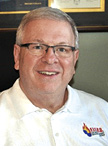
The COVID-19 pandemic created another form of pandemic for emergency responders: the pandemic of missing education and information exchange through local, state, regional, national, and international conferences and trade shows.

We are all aware that COVID-19 caused the postponement or cancellation of almost every annual fire service conference. And, it will likely cause lower, maybe much lower, attendance numbers for future events from the stress on the economy caused by the pandemic.
Related Content
- Keeping It Safe: COVID-19: Going Forward
- Keeping It Safe: An Apparatus Specification Safety Checklist?
- Keeping It Safe Archive
Local governments, the source for funding for most fire departments, are cash strapped from the lack of revenue. In turn, this creates many budget cuts. And, we all know what typically gets cut first: travel budgets. I call it a freeze on education. Elected officials do not see the value of their fire departments and firefighters learning new and better ways to operate or learn about the latest equipment innovations and development. Sadly, neither does the public. Yet, it is during these lean times that such information gathered at conferences can be most valuable.
Most glaring for the U.S. fire service was the cancellation of conferences such as FDIC International, Metro Fire Chiefs, NFPA Conference and Expo, and FRI. These events bring subject matter experts to the venue, and they bring manufacturers’ personnel (not just regional salespeople) to explain the newest in equipment and service innovations. These are opportunities that cannot be brought to the local fire departments unless your department is one of the largest metro departments.
Of particular focus at large venues is learning about all the many, many ways firefighter health and safety issues are being addressed. In the area of personal protective equipment, we are seeing changes and adaptations because of the COVID-19 shortages. And, the recent 2020 revision of NFPA 1851, Standard on Selection, Care, and Maintenance of Protective Ensembles for Structural Fire Fighting and Proximity Fire Fighting, has a rewritten chapter on cleaning based on the recent research into the topic. It is the keystone standard to many other standards that address contamination control.
The pandemic drew even more attention to the clean cab design of fire apparatus. Trade shows and conferences offer the latest innovations and practices for the design of apparatus going forward. Other apparatus safety issues are addressed such as emergency warning lights being too bright at night, collision avoidance systems, and new configurations of apparatus bodies to accommodate contamination control products.
If your department wants to learn the latest in firefighter behavioral issues, firefighter cancer, sleep deprivation, heat stress, cardiac issues, fire scene monitoring, and more, where better to learn than with a congregate of the best of the best in the business? The late Chief (Ret.) Alan Brunacini of the Phoenix (AZ) Fire Department was known to bring more innovations in service delivery than any other fire chief in history. He was the first chair of the NFPA 1500 technical committee, and the groundwork laid by his leadership has saved an unknown but significant number of firefighters’ lives. When asked how he was able to come up with all the innovative changes, he was quick to say that most of the changes were not his or his department’s. He would gather ideas as he traveled the country and take them back to Phoenix, where members would adopt or modify them to meet the department’s needs. He always carried a few index cards in his Hawaiian shirt pocket to write down new ideas or thoughts he wanted capture and use. If you were around him at one of the many fire service venues and saw him write something on one of his index cards, you knew that something had just been said or shown that got his attention.
To further illustrate the value of conferences, I have been involved in an annual fire station design conference for more than 20 years. Following each event, the common phrase heard from the attendees repeatedly is, “We would have never thought of that.”
As mentioned earlier, getting funding to attend events becomes most difficult in hard economic times. Yet, a fire station is far more complex than most think, and it is a long-term investment. Mistakes and omissions will cost a department and a community for decades. Yet, elected officials often do not think long term, as their focus is getting to the next election.
Conferences are the conduit for the exchange of ideas. The networking is invaluable. No electronic media can replace the experience of attending such events. I often think of the firefighter who was always resistant to change explaining how he had been assigned to his station for 35 years and did not see a need to learn any more. In retrospect, he had one year of experience that was repeated 35 times. Stay safe and healthy. Get out of the shadow of your own fire department.
ROBERT TUTTEROW retired as safety coordinator for the Charlotte (NC) Fire Department and is a member of the Fire Apparatus & Emergency Equipment Editorial Advisory Board. His 40-year career includes 10 as a volunteer. He has been very active in the National Fire Protection Association through service on the Fire Service Section Executive Board and technical committees involved with safety, apparatus, and personal protective equipment. He is a founding member and president of the Fire Industry Education Resource Organization (F.I.E.R.O.).

